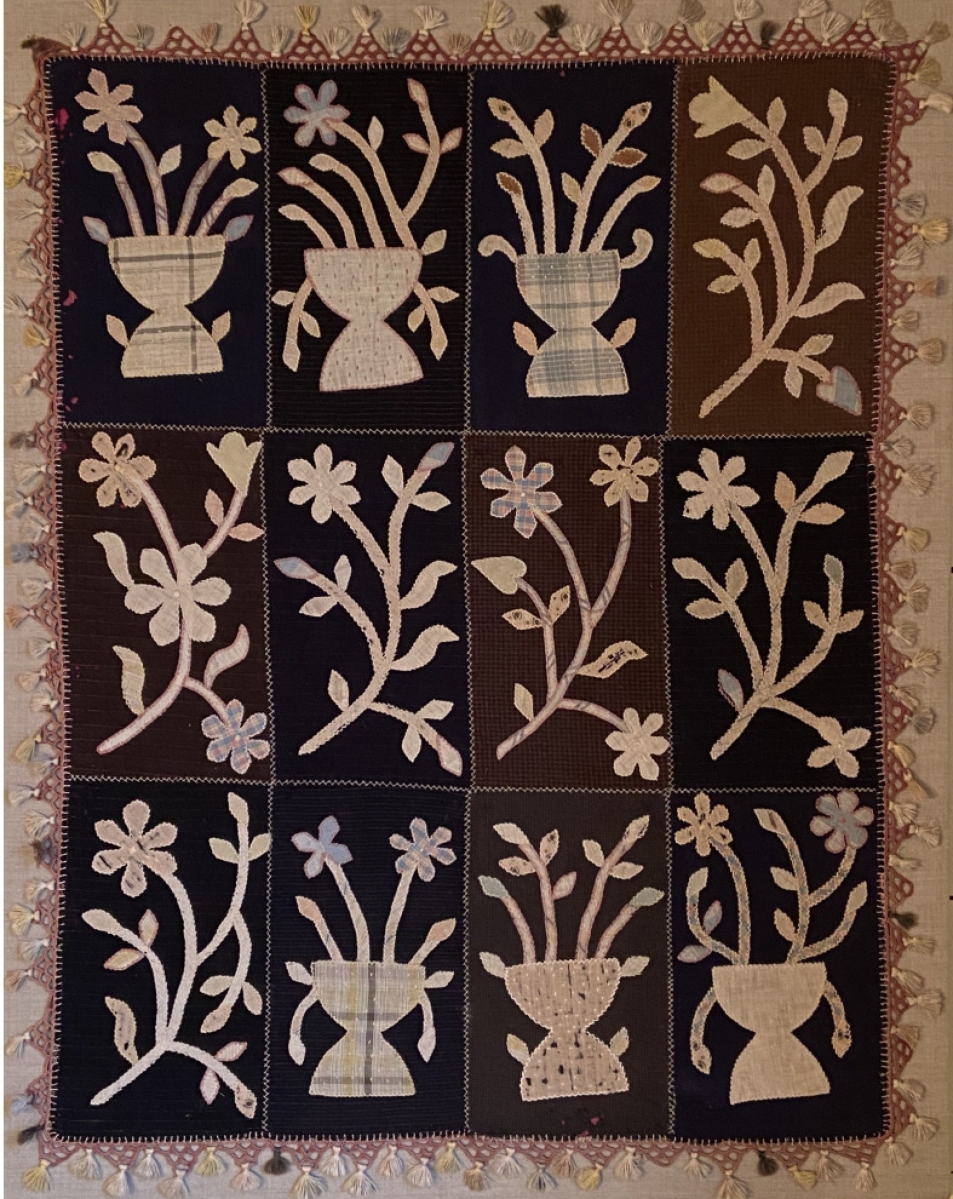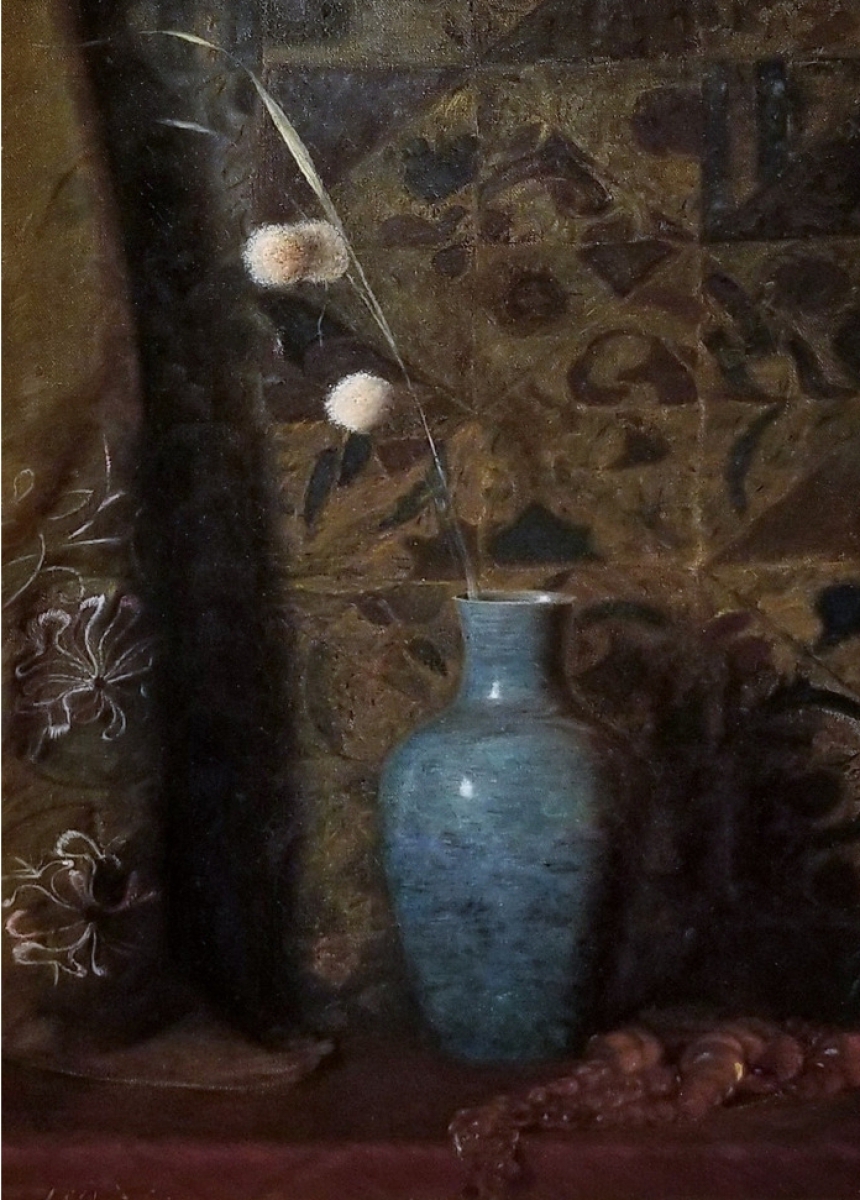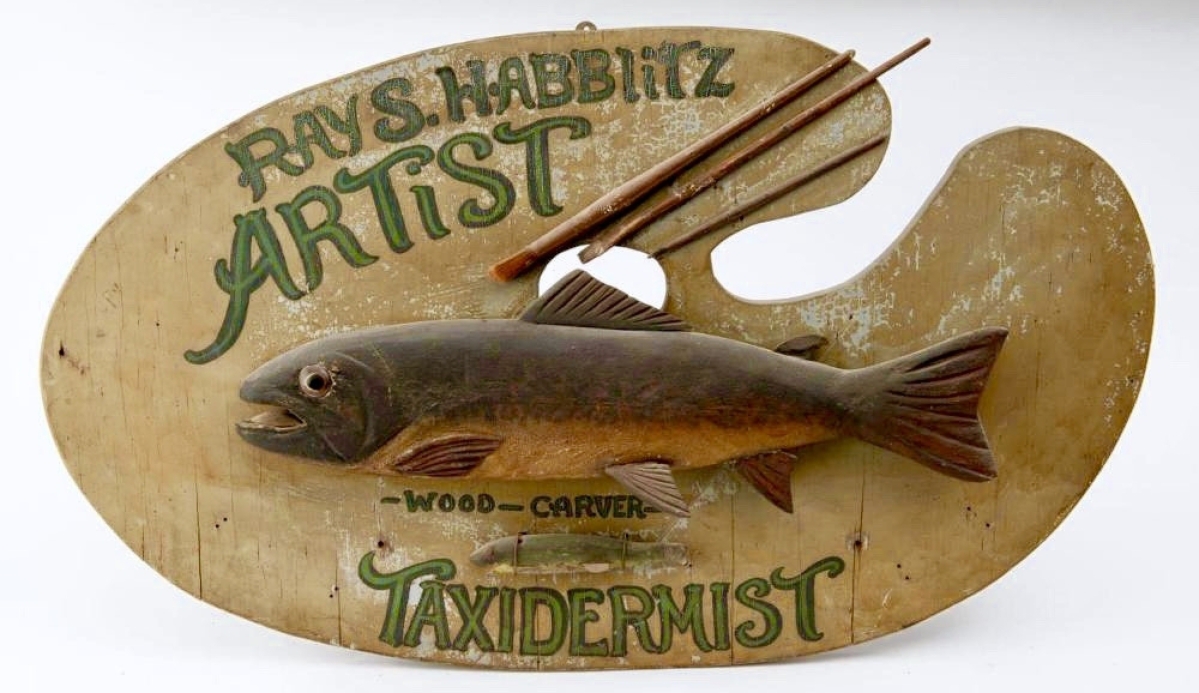
There was no other item in the show that embodied its spirit more than this object sold by Olde Hope Antiques, Inc., New Hope, Penn., and New York City. A carved walnut love token of two clasped hands, 4½ inches long, with carved lettering on the cuffs “Remember me, Truly Thine.”
Review by Greg Smith & Madelia Hickman Ring, Photos Courtesy ADA
NORTHWOOD, N.H. – When the antiques shows canceled on account of the Coronavirus pandemic, antique dealers looked online for the solution and found one in the Antique Dealers’ Association (ADA) online show, held April 24-27 on the organization’s website, adadealers.com. The format was a revival of earlier efforts, and this edition marked the 8th online show they had offered to date. The four-day show drew 10,000 visitors from across the world to view more than 1,900 works posted from the 57 dealers.
The show was propped up by the rigors of vetted scholarship and exactitude that belies objects offered by ADA dealers. Gone were the digital winds of “buyer beware.” The dealers guaranteed every object sold or money back, and buyers found that appealing in a time of great uncertainty.
Categories spanned American antiques, fine art, folk art, Americana, jewelry, Native American and other decorative arts from the Seventeenth to the Twentieth Century.
The show said 84 percent of visitors were new to its platform, and 22 percent were under 44 years old. Buyers came from as far as Italy, and while some were existing clients, many dealers reported selling to first-time clients.
According to ADA president Steven S. Powers, users were looking at an average of 25 pages, with the total number of page loads exceeding 400,000 during the show run. Desktop users accounted for 45 percent of buyers, mobile or smartphone at 43 percent, and 12 percent on tablet.
“It exceeded our expectations,” Powers told Antiques and The Arts Weekly. “As far as the amount of people that came, the amount of business that each dealer did.”

The ADA Online Show certainly looked different than a regular antiques show, but the quality of merchandise was the same as always from the ADA dealers.
The show had a bell curve for both buyers and sellers, but many found the format agreeable and exploratory when they got comfortable with the tools. Some dealers were reluctantly corralled into the online show and left as supporters of the format.
Objects across all price points sold, though some dealers found stronger support in areas of certain quality and size, the latter indicating whether an object can be easily shipped. Like any show, some dealers sold ten-plus things and others didn’t. Even still, interest in the online format is growing.
Among his selection of fine Shaker objects, John Keith Russell, South Salem, N.Y., sold a New Lebanon, N.Y., Shaker dovetailed chrome yellow carrier, circa 1880. He wrote it was “a rare example with finely executed dovetailed pine sides, nailed base and copper riveted bent ash handle.” It had an old or original chrome yellow surface.
Kelly Kinzle, New Oxford, Penn., sold a circa 1835 Tennessee sugar chest in cherry and poplar, which measures 37 inches high. The dealer wrote, “The cabinetmakers of Tennessee produced a number of [sugar chests] and the shaping of the leg and feet can identify where specifically the chest was made. Based on other known examples, this one was made in Marshall County.”
Kinzle said, “Sales are going very well. We sold to an institution, several new buyers, dealers and our regulars. I’m very pleased.”
Philadelphia-based M. Finkel & Daughter sold an American silk-on-linen sampler by Margaret Laskey from the school of Mary Zeller, Philadelphia, Penn., dated 1795. In Girlhood Embroidery, volume II, Betty Ring described samplers from Zeller’s school as “easily recognized by airy, asymmetrical motifs that float in random arrangement above her balanced terraces and lend a feeling of ebullient spontaneity to her compositions. Her tree-lined stepped terraces are usually surmounted by…a black and orange castle.” Dealer Amy Finkel called it a recent discovery and said it compares well against other Zeller School examples. Margaret Laskey died in 1809 at the age of 25, unmarried, and is buried along with her parents in Old Saint Paul’s Episcopal Church Cemetery in Philadelphia.

One of the works sold by Donna Kmetz was this painting by J. Polly Thayer Starr (1904-2006) titled “Boston Public Garden,” done in oil on board measuring 9 by 12 inches. David & Donna Kmetz American Paintings, Douglas, Mass.
“Overall, I was very pleased and I think the ADA team did a fabulous job,” Amy Finkel said. “I sold to three collectors who were unknown to me. Two of them told me, when I asked, that they hadn’t planned to attend the show had it been held. I think this portends the future. Any dealer with a strong web presence already knows that selling can be accomplished this way. It requires attention paid to communication, excellent photography and thorough information.”
Aarne Anton, who recently closed his American Primitive Gallery storefront in New York City and is now working exclusively from his Pomona, N.Y., home, could not have been more effusive about the show. “I would definitely say the ADA show was a success. I had some reservations about collectors spending money now with the economy in turmoil, not to mention the fear associated with this virus. I posted 20 pieces to the site to test the waters and was thrilled to sell seven pieces. I guess there is a therapeutic element to shopping as it allowed an easy safe way to look and buy. I found the ADA Show format user friendly: clean and simple to navigate.” Anton made sales to old clients as well as new customers, including one in Italy. Some of the things he sold included a rare African American maternity figure cane he had discovered, a carved penguin by Charles Hart, a carved wood cow sculpture from Cooperstown, N.Y., a gaming wheel and two dolls.
North Hampton, N.H., dealer George Spiecker said, “I got talked out of retirement to support the ADA Show. I listed 23 objects and sold six. Anytime you can sell 25 percent of what you ‘put on the floor’ of a show, you had a good show! No truck, no gas, no restaurant, no porters, no lights, almost no booth rent, etc, costs are less and savings can be passed to the buyer.” Sales with Spiecker included a set of William Shakespeare’s Plays & Poems, a small early American basket and a Chippendale mirror.
Jewett-Berdan’s Tom Jewett also had reservations about doing the show, but in the end was glad they did, posting the following on social media, “Want to take a moment and thank all who participated in the ADA online antiques show…Customers clients old and new and to the dealers who put some fabulous merchandise forward, thank you! We are grateful to all who purchased items from us in these trying times. We sold 12 items, shipping to numerous states. One sale even led to another sale that wasn’t even listed…Still doing follow ups with emails after the show and have possibility of future sales to some who are still thinking.” Some of the sales he reported included two trade or tavern signs, carved and fabric birds, a Hudson River School-style painting, still life pictures on paper and canvas, a hooked rug and a Pennsylvania German “scherenschnitte” scissor cut picture.
Steve and Lorraine German of Mad River Antiques, LLC, North Granby, Conn., had a successful show. Among the sales was an E.&L.P. Norton Pottery billhead detailing the sale of $31.85 worth of stoneware to E. H. Brewster & Son of Worthington, Mass. Others included a colorful American gamewheel on stand, circa the Twentieth Century and 23½ inches high; and a 7¼-inch-diameter transferware ABC plate with a lion, from the “Wild Animals” series by the Brownhills Pottery Company of Tunstall, England, dated 1882.

Judy and James Milne, At Home Antiques and Design, Kingston, N.Y., offered this pair of cast stone tazza urns on their original pedestals, circa 1950 from Sussex, UK. They measure 30 inches diameter by 40½ inches high.
“We were very pleased with the ADA online show,” Lorraine German said. “We sold several items to old customers as well as new ones, and the new ones were spread all around the country. Because of the state of the economy, our strategy was to put on more items that were in the lower end of the price range than in the higher end. The strategy paid off, because the items in the lower end of the price range were the ones that sold. We felt that the format worked well- it’s very easy for the customers to navigate. Several of them said that they believe online shows are here to stay, especially since they wouldn’t necessarily get to one of our shows because they live in other states. We’re definitely looking forward to the next online show.”
Michael J. Ogle and Diana Douglas of American Garage, Wayland, Mich., traded a few things, most notably a late Nineteenth Century bannerette weathervane, a witch-form whirligig from a North Peninsula Michigan Inn, an Odd Fellows Heart in Hand and a five-foot-long pencil-form trade sign. After the show wrapped, Ogle and Douglas told Antiques and The Arts Weekly , “Given the world circumstances, we think people were primed to shop. The show was a success, not just for us but appeared to be true for many dealers. We sold to both new and long-time clients with a variety of types, styles and price points.” The dealers think online shows, particularly those backed by organizations such as the ADA, where authenticity is vetted and items are guaranteed, will become part of the “new normal” of the future, in addition to brick-and-mortar shows. In a final comment, they said, “We think it would be worthwhile to note and critically important that the ADA online shows be an event that our customers wait for.”
Marcy Burns American Indian Arts LLC, New York City, offered ten pieces of sterling jewelry by Mexican modernist Antonio Pineda for Taxco. Among them was a “wave” bracelet that was featured in the 2008 Fowler Museum exhibition “Silver Seduction, The Art of Mexican Modernist Antonio Pineda.” The dealer also featured a Lakota beaded pictorial pipebag/tobacco bag. She wrote, “This Lakota pipebag was made soon after the Lakota were confined to Reservation. It reflects life as it was at the time while still referencing traditional Lakota pre-Reservation traditions and designs.”
Among the sales at Peter & Maria Warren Antiques, Monroe, Conn., was an English creamware fruit basket milk jug by William Greatbatch, circa 1770-80 and 4½ inches high. The pitcher featured an ear lobe handle and colored underglaze with metallic oxides.
Pewter dealers Bette and Melvyn Wolf have retired from doing live shows but they did a cracking trade in this online format, selling at least a dozen pieces in a variety of forms, including plates, tea pots, oil lamps, pitchers and sugar bowls. Commenting by email after the show, Bette said, “We had a wonderful show. We had some new customers which is always nice and we had a lot of lookers at our site. The format worked for us as the committee was great and helpful. The only trend we saw was that the middle market was the strongest. We hope that online shows continue as now is not the time to be in crowds, costs are less, it attracts people from all over the world – not just the local area – and there are no traveling distances. This makes it a winner.”

Scott Bassoff, Sandy Jacobs Antiques, Swampscott, Mass., sold a pair of portrait paintings by New England artist Zedekiah Belknap (active Mass., Conn., N.H.).
Nathan Liverant and Son, Colchester, Conn., offered up a nice mix of American furniture, folk and fine art, decorative objects and more. Right as the show opened, the dealer put a red tag on a Queen Anne maple oval top drop leaf table with straight tapered turned legs ending in turned pad feet. It was from Rhode Island, circa 1740-65. Other sales included an American or English oil on canvas portrait of an American sail and steam ship at sea, circa 1850-75; a pair of 1950s carved shorebirds; and a nice New England paint-decorated box signed TFB, a green ground decorated in yellow diamonds with inner red diamond outlines, circa 1820-45.
“Our strategy was to post a broad cross-section of categories and price ranges. We sold in every category except furniture and jewelry,” said Ted Fuehr, American Spirit Antiques of Shawnee Mission, Kansas, who additionally characterized the show as “fantastic.” He noted all of his sales were made to “dealers or very knowledgeable collectors” who had never bought from him, and were from Canada, Texas, New York, Wyoming, New Hampshire and Connecticut. Fuehr suggested holding the show from Wednesday through Sunday rather than Thursday to Monday, and also hoped there would be a way for each dealer to have one or two pieces on the first pages of future show websites. Sales included two pieces of pottery, a weathervane, a garden gate found in Missouri and a trade sign.
Richard Axtell of Deposit, N.Y., sold a few small pieces, including an early Nineteenth Century adjustable candlestand, a Nineteenth Century picture frame with alligatored surface and an appliqued quilt made from embroidered homespun fabric on a wool felt background, from New York state circa 1840.
Among notable sales from New Hope, Penn., and New York City dealership Olde Hope Antiques, Inc., was a lion rug, circa 1840, in yarn-sewn and chenille-shirred wool on coarse linen, probably New York state, 31 by 52 inches mounted. It is illustrated in American Sewn Rugs: Their History with Exceptional Examples, by Whitlock and Jamar. Perhaps demonstrating the longing for touch in the pandemic era was another sale from the dealer: a carved walnut love token of two clasped hands, 4½ inches long, with carved lettering on the cuffs “Remember me, Truly Thine.”
“We found the show successful, both financially and for the enthusiastic response,” Olde Hope co-owner Pat Bell said. “I thought the format was good, but I know a few clients found it confusing trying to find specific dealer’s inventories. It’s a learning curve like anything new. Generally, when people can’t study an item in person, the less expensive items are easier to sell, but we had strong four-figure items sell. We made new clients and sold to people we haven’t seen in a while. I’m eager to get back to in-person shows and auctions where you can examine what you are buying. There is no substitute. But I have little doubt that we will see online shows continue.”

Wells, Maine, dealer R. Jorgensen offered a stunning pair of matched mahogany Chippendale side chairs with carved backs, blind-fretting on the legs with pierced brackets at the corners. They were mid-Eighteenth Century and English. An identical chair from the Earl Howe of Penn House, Amersham Buckinghamshire, U.K., is illustrated in Hinckley’s Metropolitan Furniture of the Georgian Years.
Jesse Goldberg of Artemis Gallery in North Salem, N.Y., missed the human interaction of live shows but otherwise said the show was a success for him. “All my sales, including additional ones to strong potentials, are Federal period ceramics either made in America or made abroad for the American market. My best sales went to a Houston customer and best potentials to a Virginia museum and a knowledgeable Delaware collector. All new customers.”
An early Philadelphia low-back Windsor armchair attributed to Thomas Gilpin was sold by Philip Bradley Antiques, Sumneytown, Penn. Gilpin is the second earliest documented Windsor chairmaker in Philadelphia. The chair was circa 1760 and Bradley said it was one of only a few known Gilpin chairs. The dealer also sold a Pennsylvania fraktur decorated with two gentleman flanking a tavern rhyme that read: “Come in, dear guests, if you have money in your purse. If you have money, sit down, if you have none, take your things and go. Woman, remain standing at the door, I will bring you a glass of beer. My child, you stay there until the innkeeper gets the coin from me.” It was ex Kriebel collection, Reading, Penn.
All but one of the 19 offerings from RJG Antiques, Rye, N.H., were painted wood. A few sold, including a five-color parcheesi gameboard in original paint on thin stock poplar that found a new home in Long Island. The dealers said it was from Pennsylvania, circa 1880-1900. The dealers also sold an Elmer Crowell miniature ring-necked pheasant rooster from the 1940s in mint, original condition, 5 inches long. It sold to a Maine collector who attends the New Hampshire shows. Russ and Karen Goldberger said they sold four items the first day, though their home internet went out on Saturday and part of Sunday, leaving them without email or website. It was a “good format,” Russ Goldberger said. “Exceptionally well-done by a group of volunteer dealers.” His only suggestion would be for categories to be more accessible. To Goldberger, online shows are here to stay. “They represent another way to market our business, and their reach to new potential customers is unexcelled,” he said.
Donna Kmetz thought that the quality and presentation were wonderful and that the show went a long way in promoting the ADA, making it more accessible and expanding the market. “I’ve completed sales from the show and have others in the works. I’ve heard from my regular show audience, and also from new buyers, some from the local area who are not regular show attendees. Given that I only presented about 14 paintings, these are good stats.” Sales of the Douglas, Mass., dealer included a small oil on board painting of Boston Public Garden by J. Polly Thayer Starr (1904-2006), dated 1951.
Fellow paintings dealer, Kevin Rita of Garvey Rita Art & Antiques, had eight sales with all but two to new customers he felt confident would buy from him again. “The web system held up, was easy to navigate and load. I felt there was a younger demographic then at a brick-and-mortar ADA show.” Rita mentioned sales of works by Howard Rackliffe, Robert Kulicke, Charles Jac Young, Adelaide Lawson Gaylor, Murray Hantman and Morris Shulman.

Sales were flying for Withington & Co., Portsmouth, N.H., including this Angel Gabriel cutout figure from the mid-Twentieth Century.
Many dealers reported that the ADA staff were extraordinarily helpful making sure dealers were comfortable posting images. One of them, Kensington, Conn., dealer, Derik Pulito, said “Judy Loto was so positive in helping all us older folk in posting pictures with descriptions. She is a Godsend!” Pulito reported sales of a table, shelf and smalls, one of which was an Iroquois ash burl ladle.
Grace Snyder waxed eloquent after the show, reporting that she and Elliott had “had an excellent show, way past expectations, and importantly, I think the show was a great success for the organization. I personally really liked the format and think our show committee did an excellent job on reaching a new audience, and getting word out to our old friends as well. We sold to ‘old’ clients, but the majority of our sales were to people we didn’t know. I do think online shows will be here to stay, but judging from my own reluctance to buy things I haven’t seen and examined in person, I think the success of the ADA show also had a lot to do with nature of the organization and what we have stood for over the decades. I think the number of sales made attests to a feeling of trust collectors have with our dealers. They respect the standards we have tried to maintain, and know they have a guarantee when it comes to objects being as represented. Without that feeling of trust, I don’t think the success of other online shows is necessarily a given.
“As for sales at the show as a whole, as well as for us, I think they definitely skewed American,” Snyder continued. “We put up a wide range of objects, including quite a few early European pieces of needlework, lighting and ceramics, and while we sold a few of them, the overwhelming interest was in Americana. Furniture, understandably, was the toughest category to sell, because people feel the need to see the pieces in person, particularly when surface is an important consideration. We did sell one piece, and I was happy to see some very good furniture did sell. I thought the dealers did a great job putting up not only a wide range of material, but also material of high quality. It really felt like the ‘real’ ADA show, although we did miss Deerfield!”
A paint-decorated shelf in the form of a Native American chief with great colors and original surface was sold by Jeff Bridgman, while Jeff Tillou sold a circa 1740-50 Pennsylvania Queen Anne daybed with its original feet.
“The show was very successful for me,” said Camden, Del., dealer John Chaski. “I sold 16 items and most of them are already in the hands of their new owners. My favorite sale was of two Zuni pots which are destined for the Heard Museum in Phoenix. One was a very unusual canteen – I loved both of them. When an object makes you harbor that unspoken desire that it won’t sell, so that you can live with it forever, it always sells. I certainly hope online shows are here to stay.”

Among sales completed by A Bird in Hand was this circa 1930-50 miniature carved and painted drake merganser by Elmer Crowell (1862-1952) of East Harwich, Mass. It retained its original paint and had Crowell’s impressed rectangular brand on the bottom. Florham Park, N.J.
Sales with John Rogers Antiques of New London, N.H., included a Nineteenth Century American redware storage jar, a Nineteenth Century English spatterware teapot with dove decoration and an early to mid-Nineteenth Century American ash burl bowl.
Frank Levy of New York City’s Bernard & S. Dean Levy Inc., said the show was a success, both in buying and selling, but particularly missed seeing and buying things at set up, being able to handle objects, seeing old friends and meeting new clients. He noted that things easily shipped via UPS, FedEx or USPS seemed to sell better than others. When asked for his overall impression of the show and if he sold a favorite thing, he said, “All the things I sold were great to me. I did sell a single knife box with great inlay from Philadelphia, which I thought was very special. It has an eagle on it, which is always nice. Overall, it was a very positive experience and the timing was very good to do it. Still, I can’t see online shows taking over for real in-person shows. We deal in three-dimensional objects and there is no substitute for seeing them in person.”
Waynesboro, Va., dealer Christopher Evans, of Christopher & Bernadette Evans Antiques, said, “The show was great for us. We had nine sales, and have a few things that are still being considered. Eight of the nine were to buyers that were new to us, and as far away as California. There were several things that we received multiple inquires for before we were able to mark ‘sold.’ We feel like the show was very well-received and that even when physical shows return, there will still be a strong market for online shows with formats similar to the ADA online show.” Some of the sales Evans noted include a folk art carved and painted shelf signed “Maine,” dated 1872 from the Kern collection; a pair of late Nineteenth Century carved and painted folk art owl bookends and a 3-gallon stoneware jug with unusual bird decoration by New York City potter William Macquid that had been made for merchants.
Among his sales, Sheffield, Mass., dealer Samuel Herrup counted an English delft plate on a manganese ground with a fish border. The dealer said it was from Bristol, circa 1750, and measures 9-7/8 inches diameter. In other delft offerings, the dealer had a pair of English delft plates with fish borders that he said were probably from London, circa 1750. They featured a robed man with one arm outstretched to a fence.
“I found the ADA online show to b e very successful for us,” Herrup said. “We sold seven items, including three from our website not listed on the show. All but one were to new customers. That’s exciting!”
Another dealer who sold to all new clients was Paul Vandekar, Earle D. Vandekar of Knightsbridge, Inc. “I have ‘exhibited’ in the ADA’s online shows before, and this followed the same trends I had previously seen. We sold and were happy with the results. My clients liked it. Like online sales from our websites, it can never replace the face-to-face experience and the feel of holding a wonderful object, but people today are so used to acquiring online that, if they encounter something they like from a dealer they trust, it can be very successful.” Sales with the Downingtown, Penn., dealer included a mid-Eighteenth Century English creamware agate teapot of pecten shell form and a pair of circa 1920s American cast iron “Old Salt” Maine fishermen doorstops or bookends made by the Hubley Manufacturing Company of Lancaster, Penn.

One of many sales with Jewett-Berdan was this 1920 folk art trade sign made by — and for — Ray S. Habblitz, who was an artist, wood carver and taxidermist. The unrestored sign measured 34 inches long by 20 inches tall and had been in a Massachusetts collection. Newcastle, Maine.
Scott Bassoff, Sandy Jacobs Antiques, Swampscott, Mass., sold a plethora of things, including two English child’s mugs, a Baltimore Equitable Society plaque, a hooked mat with a bird in front of a mountain scene and a pair of portrait paintings by Zedekiah Belknap. The artist was an itinerant painter who was active in Massachusetts, Connecticut and New Hampshire.
“I loved the show,” Jacobs said. “Some of the buyers were old customers and many were first-time customers. There was interest across the board. What I liked about the format was that it acted like a show, there was a specific opening and a specific closing. That’s what differentiates this and other platforms, where oftentimes you put the object up and it stays up until you sell it. This was more specific. I had one gentleman contact me wanting to buy a pair of portraits after the sold tag went up on them. I think the format really made people see that if you wanted something, you had to pursue it.”
A Nineteenth Century country splayed-leg table from Ohio or Pennsylvania was marked sold at Sheridan Loyd American Antiques, Saint Joseph, Mo. The table had provenance to David Good and Jim & Sue Widder. Loyd said the two-board-top table was walnut with an early, possibly original red-painted surface. The dealer also sold a Nineteenth Century redware loaf dish with just a couple of rim chips, but no cracks or repairs.
Even though he only sold a few things, Loyd told us it was a success for him. “I picked up new clients,” he said.
Native American dealer Brant Mackley had sales of Navajo turquoise jewelry, a pair of scarce Athabaskan child’s size snow shoes, a Micmac birchbark canoe model and a “superlative” Iriquois effigy ladle that he had been trying to acquire for years. Sales the Santa Fe, N.M., dealer made of non-Native American antiques included a wood carving of a boy riding a tricycle and a dartboard for Phillip’s Indian Bread.
Among sales made by Ron and Joyce Bassin of A Bird In Hand, Florham Park, N.J., was a miniature carved and painted drake merganser by East Harwich, Mass., decoy carver Elmer Crowell (1862-1952) that retained its original paint. The Bassins also found a new home for a pair of Huskie dog-form doorstops made by Grenfell Labrador Industries in St Anthony, Newfoundland in original condition and original polychrome paint. A vibrant twined Nez Perce cornhusk bag with unusual geometric and arrow designs, circa 1890, was another sale made by the Florham Park, N.J., dealers.

“Moonrise” by Henry Ward Ranger was offered by The Cooley Gallery, Old Lyme, Conn. Circa 1910, the oil on canvas measures 28 by 36 inches. Ranger was the leader of the Old Lyme Art Colony.
Fine silver was offered from Spencer Marks, Ltd., Southampton, Mass., who sold a Gorham sterling figural dessert cream and sugar stand from 1870. The stand features a boy at work between the two cups, dragging the creamer by a twisted rope. The dealer had two other sales by Gorham as well. Included among them was a California redwood bowl with applied silver that the dealership was able to locate an index of records for, indicating that Gorham made about 20 similar bowls in redwood in 1915. It’s possible they were made for the 1915 World’s Fair in San Francisco. Also from Gorham was a sterling “Bird’s Nest” pudding server, circa 1870. Marks called the pattern “one of the rarest and most unusual of the American naturalistic designs in silver.”
Stephen & Carol Huber, Old Saybrook, Conn., logged a sale in an 1843 needlework sampler by C.R. Brown. The dealers thought it was probably from Pennsylvania. The sampler features an extract from an original song that accompanies a poem “The Scots Soldier’s Lament,” which originally appeared in The Literary Gazette on January 6, 1827. The dealers also nabbed a sale in a Mary Zeller’s School sampler worked by Rachel Boughten, circa 1807. It featured a girl at a well, a milking cow, a deer, lambs and other animals, all surrounding the central orange castle.
Furniture can be a difficult thing to sell online but Newton, Mass., dealer Christopher Settle sold a circa 1800 New England fancy grain-painted two-drawer lift-top blanket chest in original condition. While the brass pulls were period, they were old replacements and the chest retained its original working lock and key.
Clifton Anderson sold several Lexington, Ky., coin silver spoons, a Haida nation gold and silver belt buckle made by Jim Hart in 1979, a late Eighteenth Century decorative gouge carved molding plane probably of Pennsylvania origin, a Nineteenth Century political banner in the shape of Philadelphia’s coat of arms, a carved garden board and a British pig painting.
Offered and swiftly sold from Steven S. Powers, Brooklyn, N.Y., was an exceptional folk art painted doll’s cradle. It featured multicolored geometric patterns and Powers believed it to be an interpretation of a Joseph’s Coat of Many Colors. The underside was dated 1874 and it had provenance to both Frank Ricco and Roger Maresca, going from the personal collection of the former to the personal collection of the latter, and thereafter into an established collection. In outsider art, Powers offered a 3-by-4-inch untitled work by Melvin Way (1954-), circa 2001, with scrawled mathematical equations and bold lines throughout. He also featured the top to an English school desk with deeply carved names in it, many from the 1920s and all with distinct carving styles.

Clive Devenish Antiques was offering this George III marquetry inlaid Pembroke table attributed to Mayhew and Ince. The table had previously been sold at Christie’s, New York, January 24, 2001, Lot #553. The table had not been sold by the time the show closed. Incline Village, Nev.
Taylor Thistlethwaite of Thistlethwaite Americana, Alexandria, Va., sold a painting depicting the state seal of Pennsylvania. Beneath the seal is a narrative that the dealer said, “highlights the progress of the state, showing a broken down stagecoach and covered wagon, symbols of outdated modes of travel, presumably westward. Speeding above is a steam engine carrying goods and passengers on the journey west, celebrating the enterprising spirit of the age.”
Selling right out of the gate for The Village Braider, Plymouth, Mass., was a Twentieth Century cast iron frog, 18 inches high and 25 inches long. The dealer was also able to part with a pair of Gargoyles, 20½ inches tall.
In Staffordshire, dealership William R. & Teresa F. Kurau, Lampeter, Penn., was able to sell a mochaware pepper pot with combed design, 4-5/8 inches tall, circa the 1820s. From a decade later and across the pond, the dealers sold a Tucker & Hemphill Porcelain pitcher with floral decoration in excellent condition. They were also able to move along a George Wostenholm & Son IXL Sheffield gambler bowie knife with mother-of-pearl grip. Wolstenholm commissioned English artist Alfred Stevens to design the knife, and it won an award.
Withington & Co., Portsmouth, N.H., had a productive show, selling architectural elements, carvings and more. Among them were some angels, including an Angel Gabriel cutout figure from the mid-Twentieth Century in a green paint and an Italian polychromed angel face made to hang above a window. Slightly less angelic was a Twentieth Century carved and painted naked woman by a Maine woodsman, 5 inches high.
The successful relaunch of the ADA Show may portend to a future where this format both stands alone or accompanies a physical selling event. We look forward to both scenarios.
For additional information, www.adadealers.com.




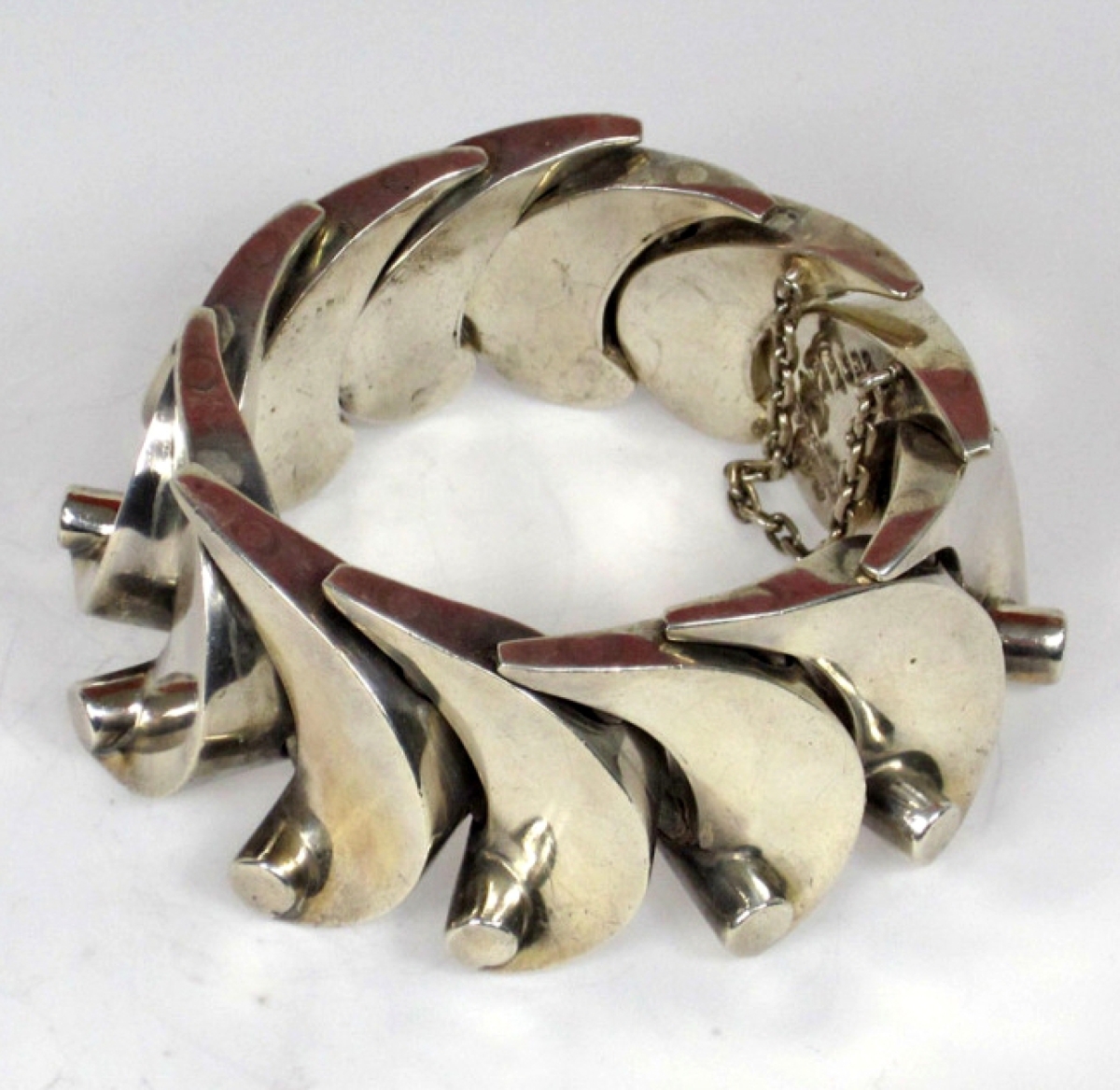









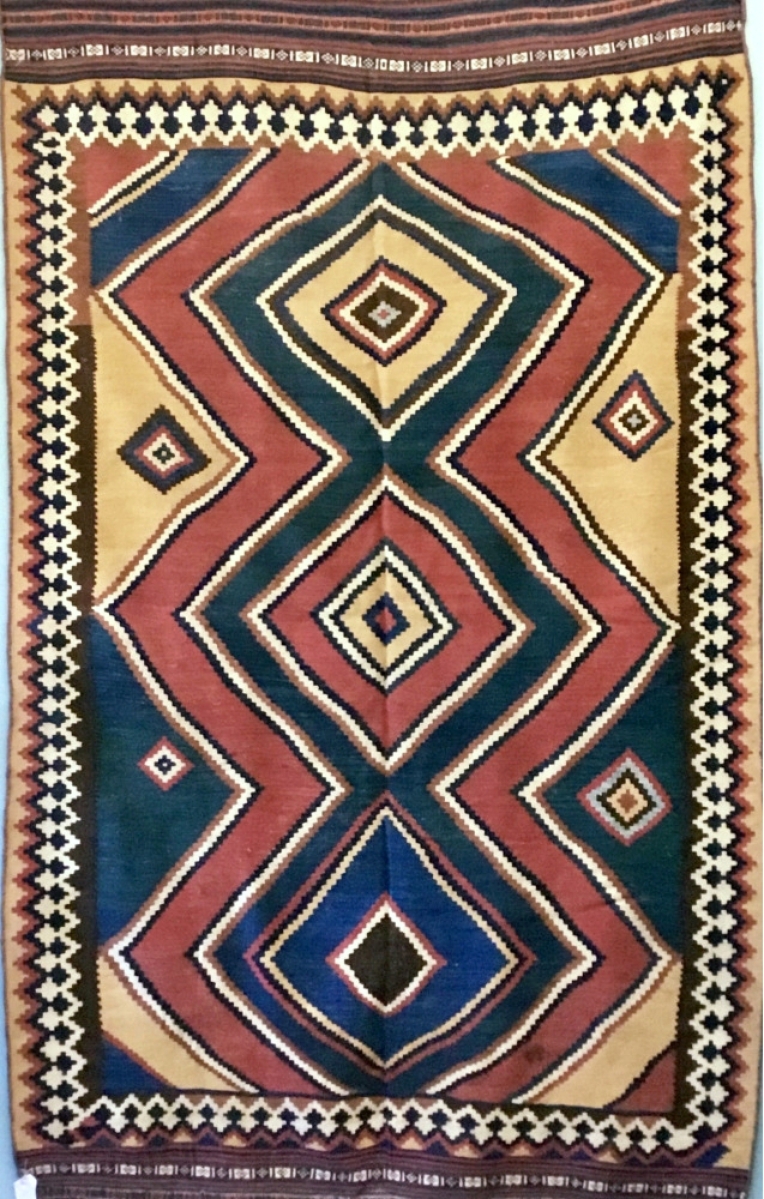









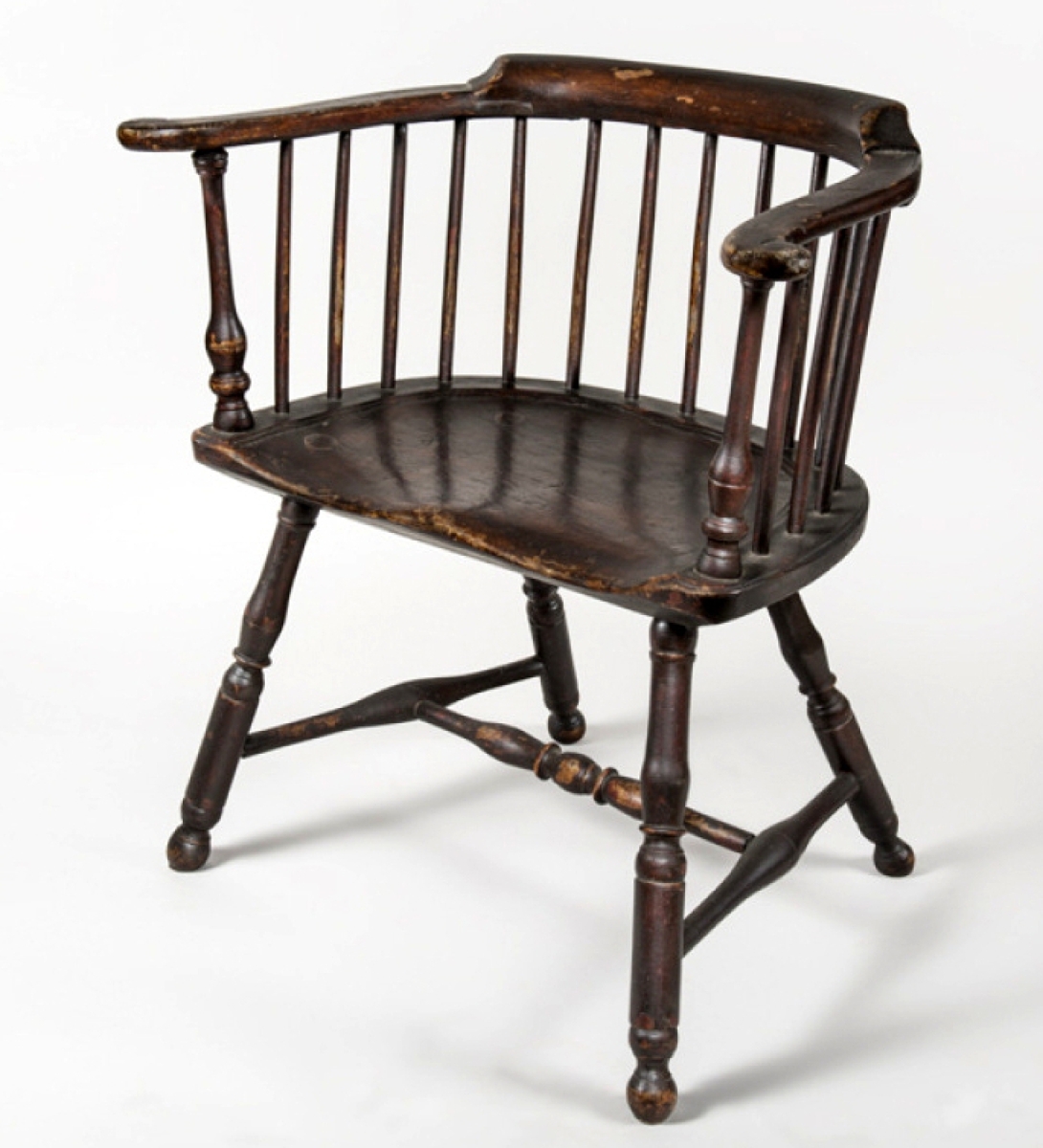

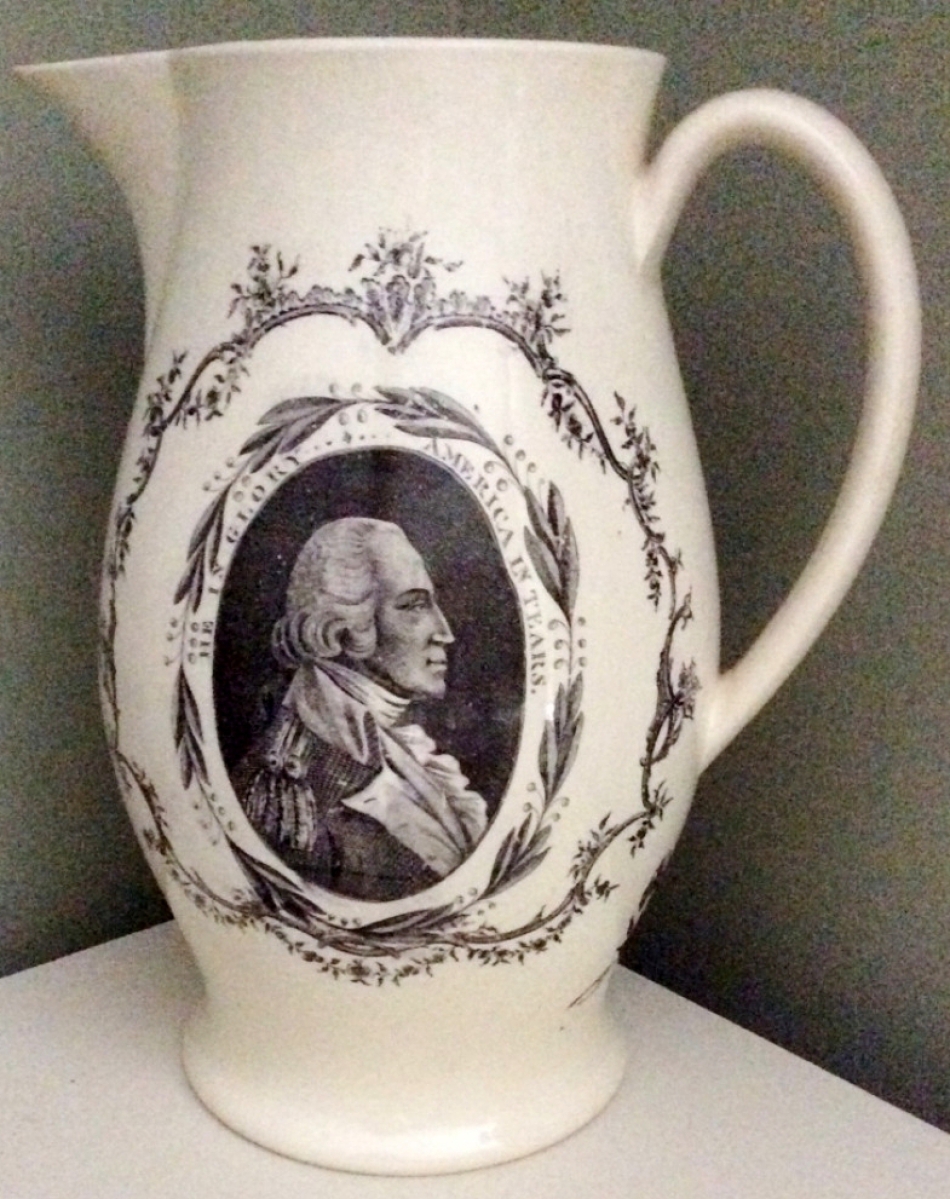
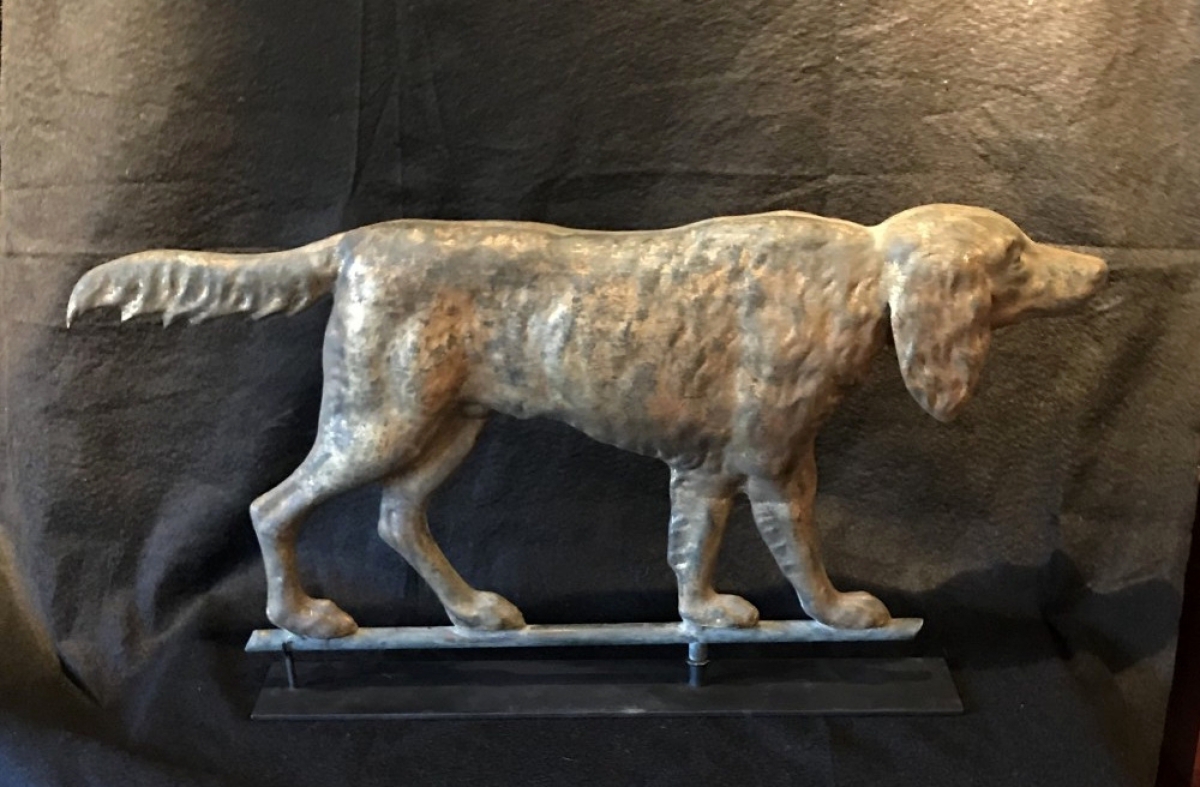
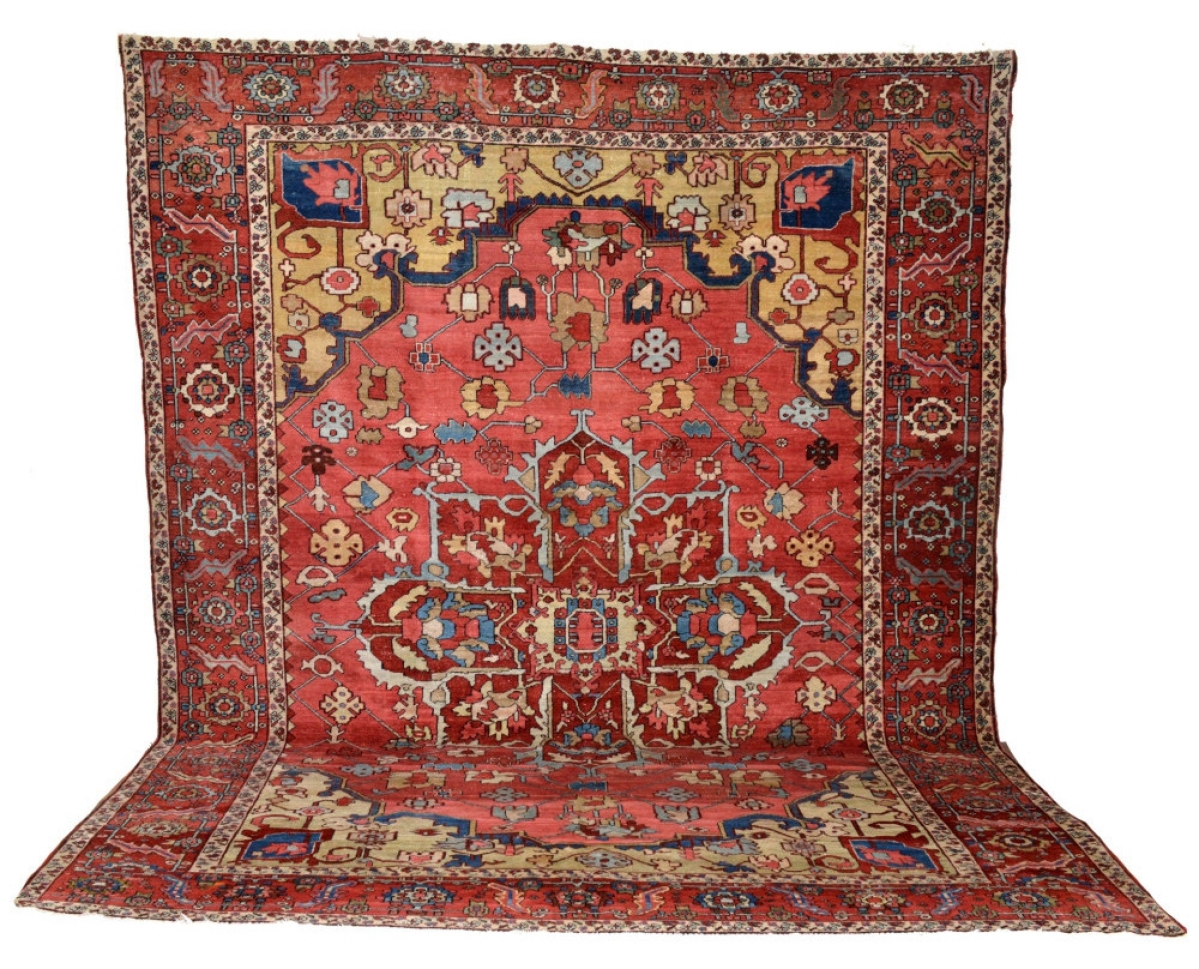







.jpg)


